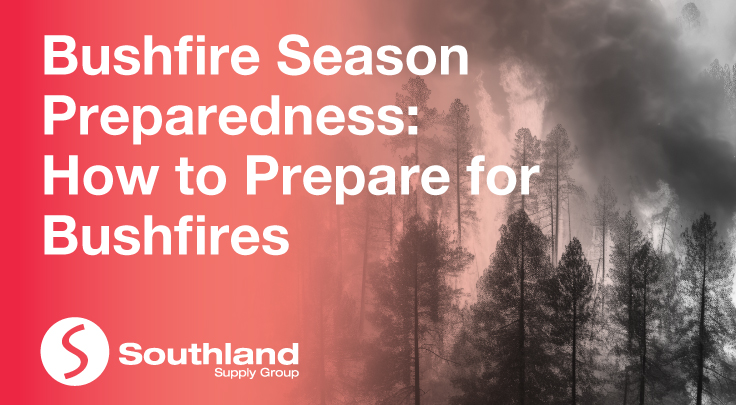Bushfire Season Preparedness: How to Prepare for Bushfires

Australia is a land of diversity, but it is also a land of extreme fire danger. The bushfire season in Australia is a yearly occurrence, bringing with it devastating consequences for communities, wildlife, and the environment. In recent years, we've witnessed the destructive power of bushfires like never before, making preparedness a critical aspect of life for many Australians. In this blog, we will explore the importance of bushfire season preparedness in Australia and provide essential tips on how to prepare for bushfires to help you stay safe during this challenging time.
What is a Bushfire? Understanding Bushfires in Australia
Australia's unique geography and climate make it particularly susceptible to bushfires. The combination of hot, dry weather and extensive forests and grasslands creates ideal conditions for fires to ignite and spread rapidly. While bushfires can occur at any time, the summer months, typically from December to February, are when the risk is highest. Knowing what a Bushfire is and understanding the factors that contribute to it is the first step in being prepared.
How to Prepare for Bushfires
Being prepared for bushfire season is not just a matter of safety; it can mean the difference between life and death. It also helps protect property, the environment, workplaces and communities. Preparedness is a shared responsibility, and everyone, from individuals to local governments, plays a role in ensuring the safety and resilience of our communities.
Essential Bushfire Season Preparedness Tips
1. Create a Bushfire Survival Plan - Develop a detailed plan that includes evacuation routes, meeting points, and emergency contacts.
2. Stay Informed - Monitor official sources of information like the Rural Fire Service (RFS) or the Bureau of Meteorology for fire alerts and weather updates.
3. Prepare Your Property/Workplace - Clear vegetation and debris from around your workplace to create a firebreak. Have firefighting equipment such as a fire blanket, valved disposable respirators, fire goggles, firefighting jacket, and Bushfire emergency safety kit readily available.
4. Pack a Bushfire Emergency Safety Kit - Prepare a bushfire emergency kit that includes essential supplies such as anti-fog & fire resistant goggles, gloves, respirator kit, burns first aid kit, gear bag, and important documents. Don't forget to also pack a battery-powered radio, flashlight, and spare batteries.
5. Protect Your Health - During bushfire season, pay attention to air quality and limit outdoor activities when air quality is poor. Have a valved disposable respirator on hand in case of smoky conditions. 3
Developing a Bushfire Emergency Plan in the Workplace
1. Evacuation procedures: Define clear evacuation routes and assembly points. Ensure that all employees know these routes and have practiced evacuation drills.
2. Communication plan: Establish a communication hierarchy to disseminate information during a bushfire emergency. Assign roles and responsibilities for communication and ensure that employees have access to reliable communication tools.
3. Emergency contacts: Compile a list of emergency contacts, including local fire services, medical facilities, and relevant authorities. Distribute this list to all employees.
4. Firefighting equipment: Ensure that your workplace is equipped with fire extinguishers, fire hose reels, and other firefighting equipment. Regularly inspect and maintain these items.
5. Firebreaks and defensible space: If feasible, create firebreaks or defensible space around your workplace to reduce the risk of fire spreading.
Bushfire season preparedness is a critical aspect of life for many Australians, given the recurring threat of wildfires. Understanding the risks, creating a comprehensive survival plan, and staying informed are essential steps to protect yourself, your loved ones, and your workplace. By following these tips and working together as a community, we can better prepare for bushfire season and reduce its devastating impact.
